These are your stories for today...
Sorry for being late, unscheduled dental visit this morning.
Be safe out there!
Tom
Navy patrol plane crashes 6 minutes after takeoff... all 4 on board dead
Military authorities are recovering the body.
By Reporter Lee Seung-gyu and Reporter Yang Ji-ho
A Navy P-3C anti-submarine patrol aircraft  crashed near the Pohang Naval Base in Donghae-myeon, Nam-gu, Pohang-si, Gyeongsangbuk-do. The bodies of the four crew members, including the pilot, who were on board the aircraft at the time were found.
crashed near the Pohang Naval Base in Donghae-myeon, Nam-gu, Pohang-si, Gyeongsangbuk-do. The bodies of the four crew members, including the pilot, who were on board the aircraft at the time were found.
According to the Ministry of Public Safety and Security, Pohang City, and the Navy on the 29th, at around 1:49 PM that day, a Navy patrol plane crashed near the naval base in Sinjeong-ri, Donghae-myeon. The Navy stated, “The crashed plane was a Navy P-3C maritime patrol plane that took off from the Pohang base at around 1:43 PM for training purposes, but crashed for unknown reasons.” The plane crashed just 6 minutes after takeoff.
All four crew members on board the maritime patrol plane were found burned to death. At the time, the plane had one pilot, a major, one captain, and two petty officers on board. A Navy official said, “We have confirmed the bodies of all four crew members on the maritime patrol plane and are currently recovering them.”
It was confirmed that this early warning 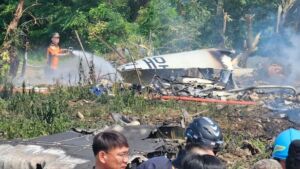 aircraft was not structured to allow the crew, including the pilot, to escape on their own. In a briefing that day, the Navy said, “The recovered bodies will be placed in Pohang Hospital,” and “The circumstances of the accident and the exact identities are being confirmed.” It was determined that the early warning aircraft had come from Jeju to the Pohang Naval Aviation Command for training.
aircraft was not structured to allow the crew, including the pilot, to escape on their own. In a briefing that day, the Navy said, “The recovered bodies will be placed in Pohang Hospital,” and “The circumstances of the accident and the exact identities are being confirmed.” It was determined that the early warning aircraft had come from Jeju to the Pohang Naval Aviation Command for training.
There was an apartment complex with 680 households just 260m away from the crash site of the early warning aircraft, so it could have easily resulted in serious casualties. However, there were no civilian casualties as the early warning aircraft crashed into an empty lot near a farm. The Pohang-Gyeongju Airport runway from which the early warning aircraft took off and the crash site were about 1.8km apart in a straight line. 
As the fire in the nearby forest caught fire due to the aftermath of the crash, forest authorities and others immediately deployed four helicopters and 65 firefighters to put out the fire. A citizen who witnessed the accident reported to the fire department that “the plane landed behind the apartment and smoke came out.”
The P-3C is the main anti-submarine patrol aircraft of our Navy, also known as the ‘submarine killer’. It was introduced sequentially starting in 1995, and a total of 16 are currently in operation in Pohang, Jeju, etc. Specialized in anti-submarine operations using sonobuoys, it serves as the ‘eyes’ of the Navy against North Korea, which possesses a large number of submarines and submersibles, and has the ability to attack submarines. It is known that this is the first time that a P-3C has crashed since its introduction in 1995.
The P-3C anti-submarine patrol aircraft is currently the only patrol aircraft type that our Navy is deploying for operations. Last year, six P-8A Poseidon aircraft were introduced, but they are still in the process of being operationalized for actual deployment. On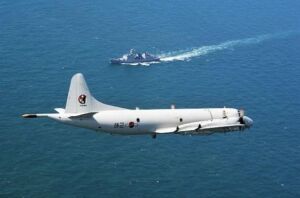 this day, the Navy took the measure of suspending flights of P-3 maritime patrol aircraft until the cause of the accident is identified.
this day, the Navy took the measure of suspending flights of P-3 maritime patrol aircraft until the cause of the accident is identified.
The Navy said, “We have formed an accident response headquarters led by the Vice Chief of Staff and are currently investigating the cause of the accident.”
https://www.chosun.com/national/incident/2025/05/29/PD66Z4WVQNBB5IZV2ZGONFLN3U/
Cause of failed Alaska Airlines landing gear that sent passengers screaming revealed
Maintenance work caused a 'fatigue crack' on an Alaska Airlines Boeing 737 plane, investigators found
By Bonny Chu , Pilar Arias Fox News
Nearly two years after passengers screamed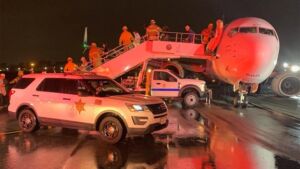 while sparks flew down a runway during the landing of an Alaska Airlines flight, the cause has been revealed.
while sparks flew down a runway during the landing of an Alaska Airlines flight, the cause has been revealed.
A final report by the National Transportation Safety Board (NTSB) released on Tuesday points to "incorrect" maintenance work.
The flight, which departed from Seattle, Washington, made a hard touchdown in Santa Ana, Calif., during Tropical Storm Hilary after the left main landing gear collapsed on touchdown.
Video recorded by a passenger captured the plane slamming into the ground at high speed. Sparks were seen flying as the plane appeared to drag its left wing along the tarmac.
Investigators revealed that the incident was caused by a "fatigue crack" of a metal trunnion pin, which is part of the left landing gear. The fracture formed from excessive grinding during a 2018 maintenance overhaul, which introduced heat damage to the metal. While the crack was initially not visible, it grew over time and ultimately "caused the pin to fracture during landing," the NTSB report said.
"Results of this examination and previous NTSB investigations demonstrate that even relatively mild heat exposure from grinding and/or machining during overhaul can lead to cracking, which can lead to fatigue crack growth and failed landing gear components, as occurred in this accident," the report stated.
The report added that the pin had endured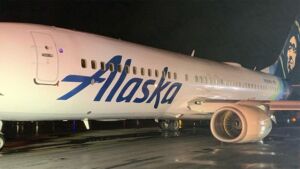 more than 4,000 landing cycles since undergoing the 2018 maintenance work. The crack itself had likely been present for approximately 800 landing cycles, the NTSB found.
more than 4,000 landing cycles since undergoing the 2018 maintenance work. The crack itself had likely been present for approximately 800 landing cycles, the NTSB found.
Although the aircraft sustained substantial damage from the hard landing, all 112 passengers and crew members were able to deplane safely and without injury.
Alaska Airlines previously said, "our focus is taking care of our guests who were on board, including retrieving their checked bags."
"We apologize for the inconvenience and appreciate their patience during this situation."
Alaska Airlines did not immediately respond to a request for comment from Fox News Digital.
Fox News' Chris Pandolfo contributed to this report.
Bonny Chu is a Digital Production Assistant at Fox News Digital.
https://www.foxnews.com/us/cause-failed-alaska-airlines-landing-gear-sent-passengers-screaming-revealed
Inside Tucson International Airport’s firefighting team
By: Bri Pacelli
TUCSON, Ariz. (KGUN) — While most people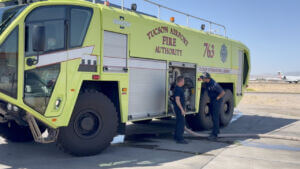 associate fire engines with house fires, a specialized team at Tucson International Airport is trained to handle emergencies on the tarmac.
associate fire engines with house fires, a specialized team at Tucson International Airport is trained to handle emergencies on the tarmac.
The airport’s fire department trains daily to respond to rare but high-risk incidents involving aircraft. Their preparation goes beyond standard firefighting and EMT duties, including aircraft rescue, jet fuel fires, hazardous materials and high-speed runway operations.
“Our firefighters come in already certified,” said Thomas Tucker, Fire Chief of the Tucson Airport Authority. “But once they’re here, they go through even more specialized training.”
The department uses unique vehicles designed to respond to aircraft emergencies. These trucks can carry 3,000 gallons of water and extinguishing agents while driving and spraying simultaneously.
“We have four different extinguishing agents,” said Fire Captain Scott Lackey. “Water, foam, Purple K, and Halon, which we use for different types of fires.”
With 20 crew members on duty, the team is always training and preparing for emergencies they hope never happen.
“We train every day,” Lackey said. “Even though real incidents don’t happen often, we’re ready when they do.”
Hundreds Of FAA Employees Hit Exit
Ireland Owens – Reporter
A host of Federal Aviation Administration (FAA) employees have been departing from the agency recently, according to The Wall Street Journal.
The agency is facing a growing number of employees either quitting or retiring, including some senior FAA leaders, fueling concerns that the departures could potentially affect air-traffic control, the WSJ first reported on Thursday. FAA workers are “departing the agency in mass quantities across all skill levels,” according to a May 7 internal presentation to senior FAA leadership discussing the agency’s so-called deferred-resignation program, the WSJ reported.
employees either quitting or retiring, including some senior FAA leaders, fueling concerns that the departures could potentially affect air-traffic control, the WSJ first reported on Thursday. FAA workers are “departing the agency in mass quantities across all skill levels,” according to a May 7 internal presentation to senior FAA leadership discussing the agency’s so-called deferred-resignation program, the WSJ reported.
A separate presentation from the FAA’s human-resources staff noted that over 1,200 employees were resigning through the agency’s deferred-resignation program, according to the WSJ. The agency’s frontline safety employees, such as safety personnel including air-traffic controllers and engineers, are not eligible for this program, according to the WSJ.
The FAA said that the mass departure of staffers, including retirements and resignations, make up roughly 3% of its total workforce and would not impact the agency’s safety-critical functions, the WSJ reported.
The FAA presentation said that staff departures could potentially impact medical clearances for air-traffic controllers and pilots being processed, as well as runway safety work, according to the WSJ.
The FAA has faced increased scrutiny after a deadly midair collision occurred near the Reagan National Airport (DCA) on Jan. 29. Earlier in May, FAA official Franklin McIntosh said while testifying before the Senate Commerce Committee that a hotline between DCA and the Pentagon had been down since March 2022, and his agency had previously not known about the outage.
“We are refreshing an organization that is built for the future,” an FAA spokeswoman told the WSJ.
The U.S. is currently facing a notable shortage of air traffic controllers. Department of Transportation Secretary Sean Duffy has been moving to address the shortage of air traffic controller workers in the U.S., announcing on May 1 a new package of actions he claimed would “further supercharge the air traffic controller workforce.”
“Safety critical positions have and will continue to be exempt from any hiring freezes or deferred resignation programs,” a FAA spokesperson told the Daily Caller News Foundation. “In addition to retaining these employees, the FAA has actually expanded hiring and onboarding for air traffic controllers and safety professionals – including safety inspectors, mechanics and others who support them.”
The spokesperson noted that the FAA has over 46,000 employees and its “voluntary resignations and retirements” only account for around 3% of its total workforce.
Additionally, the FAA spokesperson told the DCNF that the agency is bringing in “new talent” and refreshing an agency that “delivers an all-new air traffic control system to make air travel safer and an organization that ensures aviation manufacturers are delivering safe products.” The spokesperson added that the retirement program has “had no impact on the FAA’s critical safety functions,” such as oversight of airlines and manufacturers like Boeing, issuance of Airworthiness Directives (ADs), space launch approvals, and runway safety initiatives.
“While a limited number of senior leaders—whose roles are not classified as safety-critical—have voluntarily departed, the FAA has a strong bench of experienced professionals who have seamlessly assumed these responsibilities,” the spokesperson told the DCNF.
https://dailycaller.com/2025/05/29/hundreds-faa-employees-exit/
NTSB Prelim: Boeing 737
A SIGMET Advisory Was Issued At 1213 Which Forecasted Occasional Severe Turbulence Between FL270 and FL400
Location: Henderson, NV Accident Number: DCA25FA071
Date & Time: December 26, 2024, 13:35 Local Registration: N958AK
Aircraft: Boeing 737 Injuries: 2 Serious, 1 Minor, 181 None
Flight Conducted Under: Part 121: Air carrier - Scheduled
On December 26, 2024, at 1335 pacific standard time, Alaska Airlines flight 700, a Boeing 737 9, N958AK, encountered severe turbulence during cruise flight, near Henderson, Nevada. Of the 181 passengers and crew, two flight attendants received serious injuries, and one received a minor injury. The flight was conducted under the provisions of Title 14 Code of Federal
Regulations Part 121 scheduled domestic passenger flight from Seattle-Tacoma International Airport (SEA), Seattle, Washington, to Phoenix Sky Harbor International Airport (PHX), Phoenix, Arizona.
The flight crew reported that during the first half of the flight, the turbulence they experienced was “no worse than light chop”. They were aware that worse turbulence was expected during the second half of the flight, as indicated by weather products and advisories provided in the dispatch paperwork for the flight. Additionally, they monitored a company weather app and had communication with their dispatch while enroute for any updates to weather conditions and turbulence forecasts.
Before the flight, the pilots had briefed the lead flight attendant in advance about when they should perform service and prepare for landing, due to the expected turbulence. As the airplane approached the area of expected turbulence, while at flight level (FL) 330, the first officer made a public address announcement to advise the passengers that the seatbelt sign
would be turned on in about 15 minutes, and the flight attendants would then also be seated. The airplane encountered light turbulence 15 minutes later, and the first officer turned on the seatbelt sign and informed the flight attendants that the turbulence was expected to worsen, and that they should prepare the cabin and take their seats. The first officer checked in with air traffic control (ATC) and reported experiencing light with occasional moderate turbulence. ATC advised that there were areas of light chop throughout the Las Vegas area, and that there were no reports of turbulence more intense than the light chop.
About 15 minutes later the airplane encountered severe turbulence. Two flight attendants were seriously injured, and one non-revenue flight attendant passenger sustained a minor injury. All were located in the rear gally area when the turbulence occurred and were not restrained. The pilots declared a medical emergency and elected to continue to Phoenix, after determining that a diversion to the nearest airport would result in routing through the area of expected turbulence. The remainder of the flight was uneventful. EMS personnel met the airplane at the gate and four flight attendants were subsequently transported to the hospital.
A post accident review of weather data revealed that a Significant Meteorological Information (SIGMET) advisory was issued at 1213 which forecasted occasional severe turbulence between FL270 and FL400 due to wind shear associated with the jetstream in an area surrounding the accident location. A pilot report (PIREP) had previously included such conditions 5 minutes prior to the accident in the general vicinity of the turbulence encounter location. Additionally, an Airman’s Meteorological Information (AIRMET) advisory was issued for the area at 1245, which forecasted moderate turbulence between FL180 and FL400.
Satellite and weather radar data for the accident area indicated there was cloud cover above the turbulence encounter locations and no precipitation echoes, respectively.
Qualified parties were invited to participate in the investigation. These included Alaska Airlines, the Federal Aviation Administration (FAA) and National Air Traffic Controllers Association. The following NTSB specialists were assigned to investigate the accident: Air Traffic Control, Meteorology, and Operations. The investigation is continuing.
FMI: www.ntsb.gov
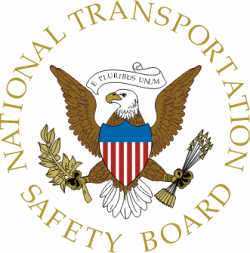
Today in History
78 Years ago today: On 29 May 1947 United Airlines flight UA521, a Douglas DC-4, crashed on takeoff from New York-La Guardia Airport, USA, killing 43 occupants; 5 survived the accident.
| Date: | Thursday 29 May 1947 |
| Time: | 19:05 |
| Type: | Douglas DC-4 |
| Owner/operator: | United Airlines |
| Registration: | NC30046 |
| MSN: | 18324 |
| Year of manufacture: | 1944 |
| Total airframe hrs: | 5950 hours |
| Fatalities: | Fatalities: 43 / Occupants: 48 |
| Other fatalities: | 0 |
| Aircraft damage: | Destroyed, written off |
| Category: | Accident |
| Location: | New York-La Guardia Airport, NY (LGA) - United States of America |
| Phase: | Take off |
| Nature: | Passenger - Scheduled |
| Departure airport: | New York-La Guardia Airport, NY (LGA/KLGA) |
| Destination airport: | Cleveland Municipal Airport, OH (CLE/KCLE) |
| Investigating agency: | CAB |
| Confidence Rating: | Accident investigation report completed and information captured |
Narrative:
United Airlines flight UA521, a Douglas DC-4, crashed on takeoff from New York-La Guardia Airport, USA, killing 43 occupants; 5 survived the accident.
A Douglas DC-4, operated by United Air Lines, was destroyed in an accident at New York-La Guardia Airport, New York, USA. Five of the 48 occupants survived the accident.
The DC-4, named "Mainliner Lake Tahoe", was ready for takeoff at 19:04 hours local time. The tower operator asked whether the flight wished to wait out a storm on the ground. The captain answered. "I'll take off." The tower then advised the flight: "Cleared for immediate takeoff, or hold; traffic on final approach north of Riker's Island." Flight 521 rolled onto runway 18, and accelerated for takeoff immediately. The captain applied back pressure to the control column but the controls felt heavy and the aircraft did not respond. The captain decided to discontinue takeoff.
About 1,000 feet from the south end of the runway he applied brakes, ordering the co-pilot at the same time to cut the engines. A ground-loop was attempted by heavy application of left brake. The aircraft, however, proceeded to roll straight ahead. Then, with both brakes locked it continued over the remainder of the runway, crashed through the fence at the airport boundary, and half-bounced, half-flew across the Grand Central Parkway. The aircraft finally came to rest immediately east of the Casey Jones School of Aeronautics, a distance of 800 feet from the end of runway 18 and 1,700 feet from the point at which brakes were first applied. It was almost immediate enveloped in flames.
Investigation revealed that the gust locks on the plane had been altered, permitting it to remain locked even after removal of the gust lock warning tape.
PROBABLE CAUSE: "The Board determines that the probable cause of this accident was either the failure of the pilot to release the gust lock before take-off, or his decision to discontinue the take-off because of apprehension resulting from rapid use of a short runway under a possible calm wind condition."
![]()